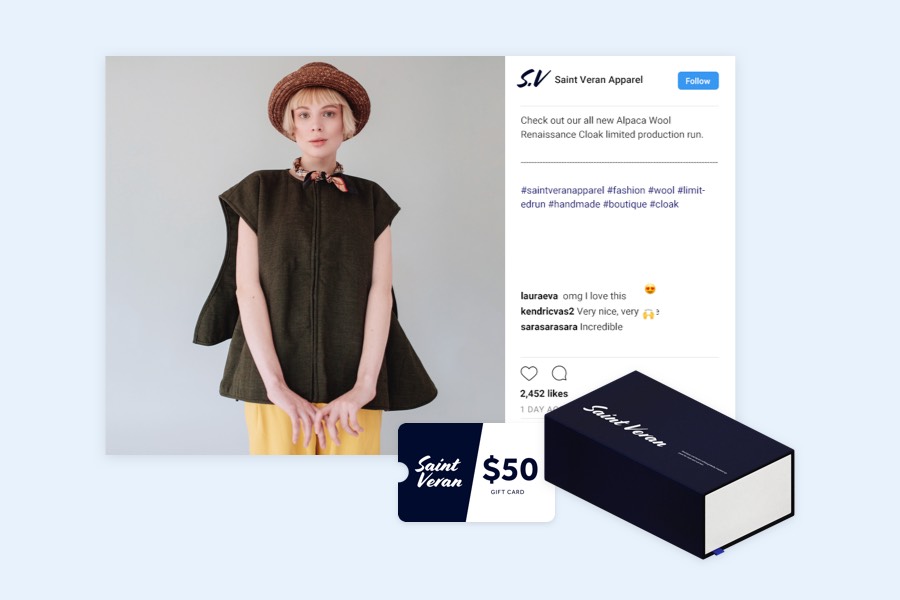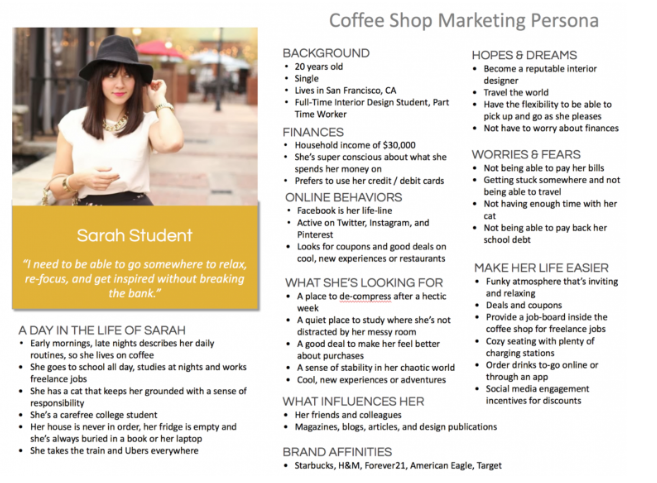Chapter 4
Define Your Brand Personality

While visuals are certainly important, it’s usually more helpful to start with a clear understanding of what your brand is, who you’re targeting and the story or value you’re trying to sell.
Here’s how to define your brand:
Get to know your audience
Think realistically about who you’re trying to target with your product. While in an ideal world everyone would want to purchase your product, be realistic — that’s simply not possible. A more strategic approach is to build out user profiles. These are descriptions (real or imagined) of customers you think are indicative of who you’re selling to.
You can be creative and have fun with generating your personas, as long as you don’t make them so broad that literally anyone can fit into your categorization, or so limiting that it’s just your one friend who’s into Sailor Moon cosplay. This doesn’t mean your target audience won’t evolve as you begin to sell your products, but it’s important to start with an idea of who your target customer is so you have something to work off of.
Here’s an example from Iron Springs Design:

Tell your story
As a creative entrepreneur, the emotional connection your share with your customers is more important than ever. The best way to establish that connection is by sharing your story. There has to be a motivation behind what you’re doing, or a reason you’re selling what you sell. Maybe you’re trying to solve a problem — or maybe you just want a hobby. Whatever the reasons are, share them.
While it may seem trivial, creating a strong ‘About’ section on your website will help customers understand who you are and why they should choose your brand over whoever your competitors are.
Lastly, be authentic. Don’t make up a story because you think it will sell. Remember, authenticity is important to people — so be real.
Steps toward positioning your brand
Once you’ve clarified your story, it’s time to figure out how to position your brand.
There’s a lot that goes into brand positioning from your values and your mission statement, to your competitors and your product category. But, when you’re just starting out, there are two major elements that every brand should have:
a.) Value Proposition - A value proposition, or value prop, is a clear, simple descriptor of how your business solves a problem or helps a customer. Your value prop helps dictate your marketing and informs the tone of voice you can use when you’re talking to your customers. The key to a good value prop is to keep it simple. Make sure it’s something you, and any employees you have, can easily remember. If you want to learn more, here’s a great article on how you can create your own unique value prop.
b.) Differentiators - There has to be some reason why a shopper would want to buy your products over someone else’s. Whether your product looks better, or is totally innovative, your differentiator is what separates you from the pack. It’s what will hopefully help drive your sales.
Define your brand
Now that you’ve established your audience, your story and positioning, it’s time to define your brand characteristics. There are lots of fun ways to do this (check out the card game Brand Deck), but they’re all just different approaches to figuring out how to describe your brand.
The simplest way to do this is to take a sheet of paper, or a white board, and start writing down words that you’d use to describe your brand. If you’re having trouble, try it with a brand you know and love to get the pen moving and your brand defining instincts going.
Once you’ve written down a bunch of adjectives, circle the top three. This is the heart and soul of your brand and should drive your brand decisions. Post this on the wall — and whenever you’re having trouble making a business decision, think about the fundamentals of your brand.
Finally, when you’ve established these elements, the tone and language you use to talk about your brand should come naturally. If it doesn’t, just think back to your value prop and remember what sets your brand apart.
Follow your guidelines
If brand really is your company’s personality then that means every touchpoint with your customer is an opportunity to showcase your brand. This includes your social media profiles, your email marketing, your product packaging, your business cards and much more.
Once you have a clear idea of what your brand is, showcasing it can be easy. Whenever you have a tough decision, just go back to your brand guidelines and ask what decision best matches your guidelines.
If it’s a color choice, or font choice, the language you use in your copy, even how you interact with your customers, your brand guidelines should help you make difficult brand decisions and build something consistent.